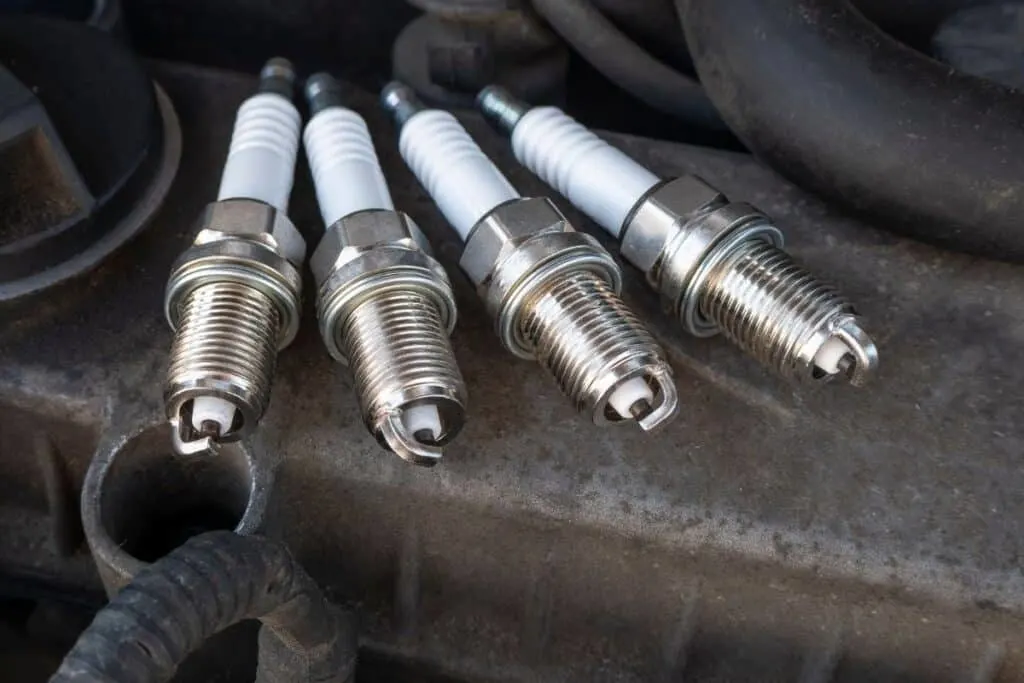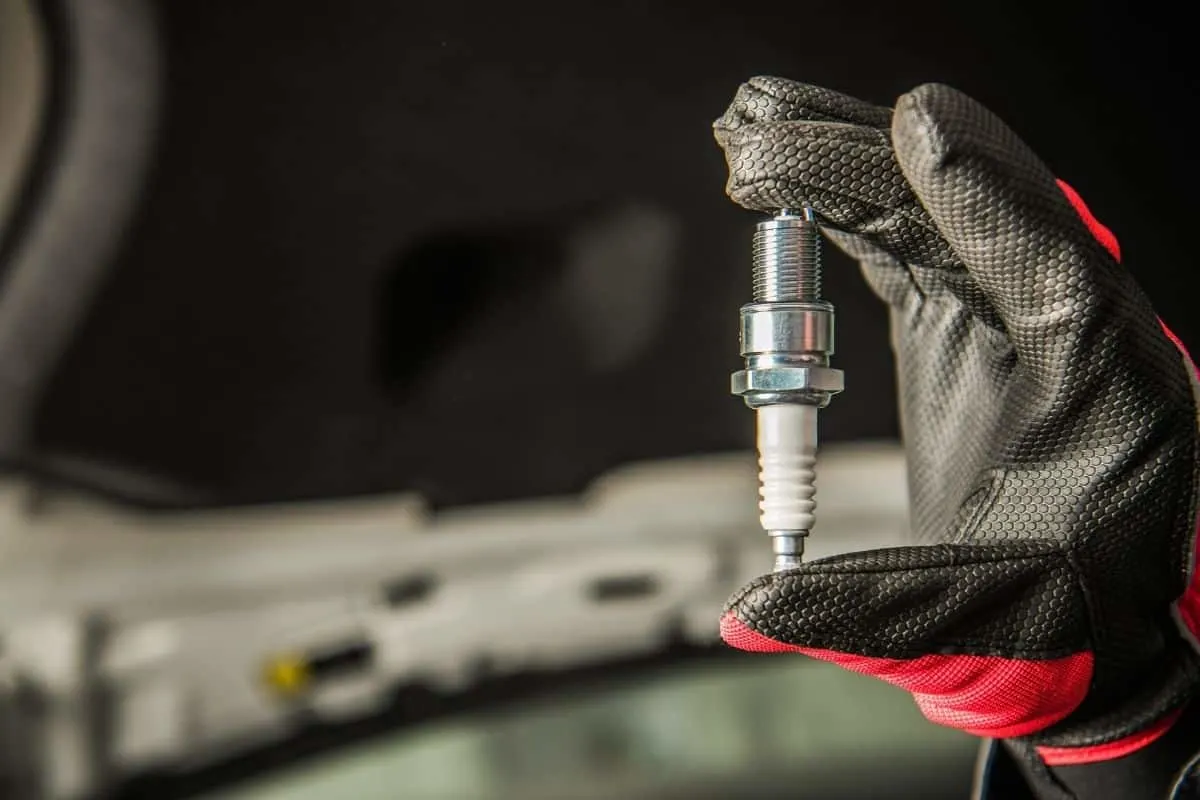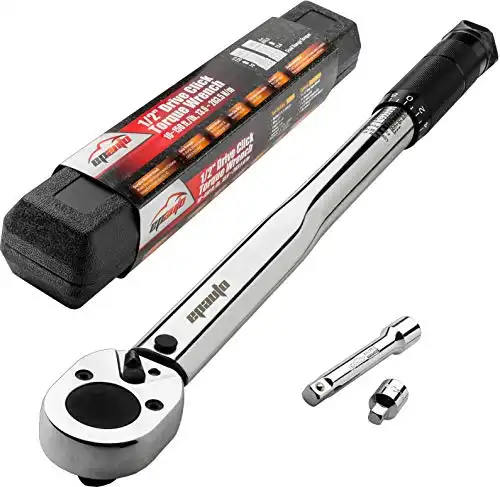Spark plugs are vital for a vehicle’s performance. They deliver the spark that ignites the mixture of fuel and air in the combustion chamber. Correctly installing a spark plug is essential to the engine’s performance.
Most spark plugs are tightened between 8 – 40 Nm and should be installed to the manufacturer specified torque setting using a torque wrench to avoid over or under-tightening. The larger the spark plug thread size, the more tightening it typically requires.
Because spark plugs are so important to an engine’s function, it’s critical to double-check the torque settings for your specific ones before installing them. Let’s look at how to handle spark plugs installation and the effect of loose and tight plugs.
Can You Over-Tighten Spark Plugs?
It’s not advisable to over-tighten spark plugs. The extra torque stresses the metallic shell, breaking the threads in the cylinder head and spark plug or fracturing the insulator.
When installing spark plugs, it’s vital to adhere to the manufacturer’s specifications.
Too much torque damages the threads in both the spark plug and the cylinder head.
It also stresses the interior seal in the spark plug or causes a hairline fracture on the insulator.

Symptoms of Over-Tightened Spark Plugs
The symptoms of over-tightened spark plugs include unpredictable misfires, reduced RPMs, and problematic engine starts. Additionally, you’ll find that:
Overly tight spark plugs are hard to remove
Loosening a spark plug screwed too tight is difficult, if not impossible.
Build up from corrosion, deposits, and debris glues the spark plug to the cylinder head.
Loose Objects can get in Combustion Chamber
Another possible effect is the spark plug electrode or insulator breaking.
These pieces can end up in the combustion chamber, ruining the surfaces they come into contact with.
What Happens When Spark Plugs Are Too Tight or Loose?
1. Loose Spark Plugs
Loose spark plugs affect the overall performance and damage the engine in the long run. Engine mounts, both rubber, and hydro-elastic, should be able to repress the internal vibrations.
If the spark plugs are loose, these vibrations are not absorbed. The plugs become more open with distance, affecting the cylinder performance.
Too little torque affects the spark plug’s position on the cylinder head. There is inadequate contact with the cylinder head, which hinders heat transmission.
There is minimal compression inside the cylinder, and oxygen gets inhaled through the loosened plug during the downward stroke. Excessive oxygen and reduced condensation lead to power loss and engine misfires.
Other issues that may arise are:
Poor Engine Performance
When one or all spark plugs are not well attached to the cylinder heads, it can lead to difficulties when starting the engine, reduced acceleration rate, and misfires.
Engine Pre-Ignition
A loose spark plug can lead to overheating and improper combustion. If this happens, the over-heated surface causes pre-ignition.
Harmful Detonation
Detonation refers to the unpredictable combustion in the engine, which presents as knocking or pinging. It leads to total engine failure or permanent damage.
Dead Cylinder and Piston Damage
When a spark plug is loosely fit, it can detach completely, leaving a dead cylinder as the vehicle is moving.
2. Tight Spark Plugs
Attempting to remove a tight spark plug can affect the bolt hole. The cylinder head has a bolt hole that should always remain in good condition.
Any damage, deformity, or stripping is detrimental as installing a new spark plug won’t be possible. It ends up costing you even more in repairs.
Stripped Threads
The metallic shell on a spark plug tends to stretch when tightened too much. As a result, the threads break away or crack. It can also fracture the insulator or break the interior gas seals.
Additionally, the heat dissipation minimizes, causing pre-ignition and eventual engine damage.
When threads get stripped, the spark plug keeps rotating without tightening. The only solution is to replace the head or fix the Helicoil, which is an expensive procedure.
Once a spark plug gets tightened excessively, you will need a replacement since the compression in the gasket is single-use.

How to Know If Your Spark Plugs Are Too Tight
The best way to check the tightness is by inspecting the spark plugs themselves.
When too loose, we can easily turn them around by hand.
When too tight, it’s not possible to turn them, even using a wrench.
How Tight Should I Tighten My Spark Plugs?
When installing the spark plugs with tapered seats, we can use our hands to the point where it becomes finger-tight.
Next, use a spark plug wrench to turn the plug an additional 1/16th turn, in line with the manufacturer’s directions for a 14mm thread.
Better yet, get a torque wrench to ensure that you’re tightening them to the exact tightness needed!
What’s the Proper Tightening Procedure?
- The first step is cleaning the cylinder head to remove debris and the threads on the spark plug.
- Next follows screwing the spark plug in till the cylinder head makes contact with the gasket.
Tightening With a Torque Wrench
Different spark plug manufacturers have varying torque specifications. This information is available online.
We have to search for the details on specifications.
Tightening Without a Torque Wrench
If we don’t have a torque wrench, screw in the spark plug manually, and then tighten using a plug wrench.
Some manufacturer specifications include:
Autolite Spark Plugs
If the spark plug has a gasket use;
- 1/4 turn for 10mm plugs
- 3/8 turn for 12mm plugs
- 1/2 turn for both 14mm and 18mm plugs
If it has a tapered seat, use 1/16 turn
Bosch Spark Plugs
If the spark plug has a gasket, use a 1/4 turn, and for those with a tapered seat, use a 1/16 turn.
Champion Spark Plugs
For spark plugs with a gasket, use a 3/8 to 5/8 turn. For those that have a tapered seat, use a 1/16 turn.
Denso Spark Plugs
If the plug has a gasket, use a 1/4 to 1/2 turn. If it has a tapered seat, use a 1/8 turn
E3 Spark Plug
For spark plugs that have a gasket, use;
- 1/2 turn for 10mm plugs
- 3/8 to 1/2 turn for 12mm plugs
- 1/2 to 3/4 turn for 14mm plugs
For plugs that have a tapered seat, use a 1/16 turn
NGK Spark Plugs
If the plug has a gasket, use a 1/2 to 2/3 turn. If it has a tapered seat, use a 1/12 to 1/8 turn.
During spark plug installation, the mechanic should use the appropriate torque wrench to match the torque indicated on the spark plug package.
If the spark plugs are too tight or too loose, it may cause oil leakage in the spark plug case. The oil may end up getting heated and starting a flame while we are driving or end up damaging other engine components.
Frequently Asked Questions (FAQs)
Can I Use Anti-Seize on Spark Plugs?
It’s best to avoid using any anti-seize lubricants on the threads. The lubricants minimize the friction created by threads, leading to over-tightening.
Can I Change My Spark Plugs?
With some mechanical knowledge, you can change the spark plugs on your own. Keep in mind that even slight errors during installation can have a severe impact on your engine.

